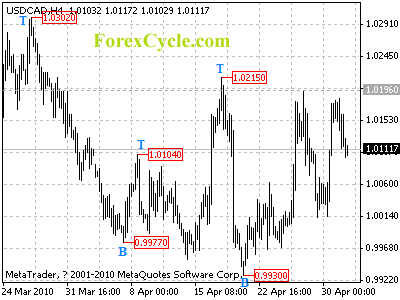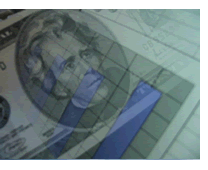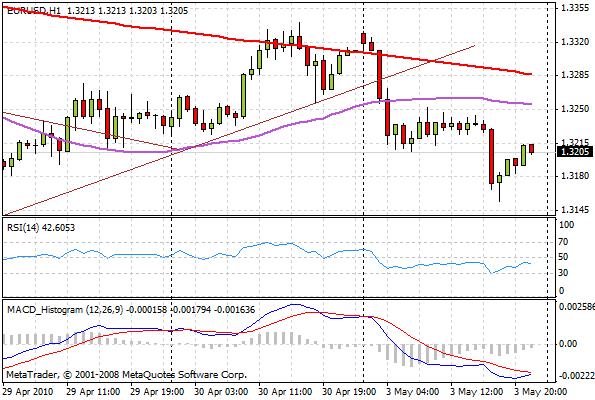The Greek debt crisis now threatens to spiral out of control – in spite of IMF rescue efforts – and the fate of the entire eurozone is at stake.
The Greek debt crisis is serious… deadly serious. Those who still think the situation will turn out okay – that it will “blow over” – are clinging to foolish hopes, just as they have done at great cost in the past.
And what do I mean by “deadly serious?” Put it this way. The world may soon face the credible threat of systemic collapse for the entire eurozone.
I’m not kidding here. It’s important that you get you a mental handle on this.
“Investors are abandoning the euro at a rate not seen since the collapse of Lehman Brothers Holdings Inc.,” Bloomberg reported this week, “as Europe’s worsening fiscal crisis threatens to splinter the 16-nation currency union.”
The Lehman Brothers reference is not overkill. When Lehman went under in September 2008, it led to a horrifying domino chain of events that completely seized up the markets. The global financial system had a massive heart attack.
Now we are facing the same prospect in Europe.
Will You Be an “FX Dagger” Millionaire?
Because we want you to take advantage of the hot new “FX Dagger” currency niche market… we launched a brand-new service, Currency Profits Trader, with a single objective: To help you turn $5,000 into $1.2 million in the next 12 months. Space strictly limited. First come, first served.
Get details on how “FX Daggers” could make you a currency millionaire!
To Know Is to Fear
Those who aren’t concerned over what’s happening in Europe now simply aren’t paying attention. Those who ARE paying attention are seriously frightened.
To give you a sense of what we’re dealing with, I’ve compiled a series of quotes and commentary from observers in the know (bold emphasis mine).
In a few days time, there might not be a euro zone for us to discuss.
– Nouriel Roubini, Roubini Global Economics
It’s like Lehman Brothers and Bear Stearns. It is not so much the fundamentals as it is the unwillingness of the market to fund you.
– Phillip Lane, Professor of International Economics, Trinity University
I covered emerging market sovereign bonds for many years, but I’ve never seen anything like this: a country trading at levels where the bear case is terrifying, the bull case is very hard to articulate, and everybody is talking about a possible default even when the country has an investment-grade credit rating from two agencies and is only one notch below investment grade at the third. Maybe the only thing which really explains what’s going on is that both yields and ratings are sticky. Which would imply that Greece has a long way to deteriorate from here.
– financial blogger Felix Salmon
The situation is deteriorating rapidly, and it’s not clear who’s in a position to stop the Greeks from going into a default situation. That creates a spillover effect.
– Dr. Edward Yardeni, Yardeni Research
The issue is rollover risk [referring to Spanish debt contagion]. Spain has to issue new debt plus roll over existing debt to the tune of 225 billion euros this year. Fourty-five percent of their debt is held by foreigners so they are dependent on the kindness of strangers.
– Jonathan Tepper, Variant Perception
Spain‘s cash flows are extremely bad… Spain’s living standards are reliant on not just the roll of old debt, but also on significant further external lending…
– Ray Dalio, Bridgewater Associates (one of the world’s largest hedge funds)
Everything you knew or thought you believed about the European economy – and the eurozone, which lies at its heart – was just ripped up by financial markets and thrown out of the proverbial window. …This is not now about Greece… This is about the fundamental structure of the eurozone.
– Simon Johnson, former IMF chief economist
The Authorities Are Useless
As the Greece crisis unfolds, we will hear more from various authorities on how the problem is “contained.” But if 2008 taught us anything at all, we should know just how useless such assurances are.
Subprime was supposed to be “contained” too, according to the U.S. Treasury and the Federal Reserve. Remember all those soothing words that amounted to “calm down, there’s nothing to worry about here,” just before the whole system nearly melted down?
It is the job of the authorities to manage risk for the entire system, and thus to jawbone investors into complacency whenever possible in order to keep a lid on panic. Unfortunately, this requires routinely telling people “everything is fine” when, in reality, all hell is threatening to break loose.
Can Europe Even Afford a Bailout?
As of now, it isn’t even clear whether Europe can afford a full bailout. Total cost estimates swing wildly, from a low end roughly $160 billion (for Greece alone) to an eye-watering $500 billion… or even more.
The real issue is contagion – not just the cost of bailing out Greece, but that of other troubled countries waiting in the wings. Looming largest among them: Spain.
“We have seen this movie before,” says U.S. Representative Mark Kirk, who sits on the House Appropriations Committee that oversees dispersion of IMF funds. Kirk had direct experience (via the World Bank) with the Mexican debt crisis in 1982.
“Spain is five times as big as Greece,” Kirk adds. “That would mean a package of 500 billion.”
And 500 billion isn’t even the worst estimate. David Mackie, chief economist with JPMorgan London, envisions the need for a eurozone rescue package equating to 600 billion euros… or a whopping $794 billion at current exchange rates.
Other investment bank analysts more or less agree with Mackie. “To fix the region’s fiscal crisis,” Bloomberg reports, “the EU may need a plan larger than the $700 billion Troubled Asset Relief Program deployed by the U.S…”
The IMF Solves Little
But what about the International Monetary Fund? Can’t they fix the problem? Nope.
First of all, the IMF doesn’t have enough money to stop the contagion. If Greece were an isolated problem, and one which could feasibly be solved by an IMF cash injection, the answer would be “maybe.”
But Greece is not isolated. It is one “problem” of many. And no one really believes IMF money will help anything in the long run anyway.
IMF efforts to bail out Argentina turned out to be a disaster. Argentina tried to implement the IMF’s tough “austerity measures” – harsh fiscal conditions attached to the receipt of rescue funds – but cracked under the strain.
Argentina wound up going into default in 2002. If they couldn’t hack it, there is no way Greece can. There is no political will among Greek leaders to belt-tighten to the point of pushing the country into deep recession, or even depression, simply to pay off external debts.
What’s more, even if Greece takes IMF money, that just means existing creditors will be pushed to the back of the line. The IMF would demand preferential treatment as a lender of last resort (in terms of getting paid back first).
That means an IMF rescue package could actually make Greek debt holders more nervous, not less. Standard & Poor’s estimates that investors could lose as much as 200 billion euros, or $265 billion, in the event of a Greek debt default.
The Germans Are Furious
Furious Germans are another roadblock to crisis resolution.
According to a weekend survey from Bild, a popular German magazine, 86% of Germans are dead set against bailing Greece out with German funds. A survey from German television channel NTV further found a stunning 92% of Germans thought Greece should go bankrupt.
Not very charitable, those Germans. But can you blame them? They know that if Greece gets a handout, more will come… on a much bigger scale.
Under more normal circumstances, European politicians would simply try to run roughshod over the will of the German populace. But this time, things have been complicated by a looming election on May 9. German Chancellor Angela Merkel can’t afford to offend her constituents too much, even as other countries (like France) scream at Germany for not whipping out the checkbook.
The McBrennan Secrets!
For over 158 years, this one-of-a-kind collection of secrets has helped build fortune after fortune. The secrets can do the same for you… starting today… RIGHT NOW. Follow this link to reserve your copy of the Book of Wealth and learn the secret to lifetime wealth creation.
No Black Swan Here
There has been no real leadership throughout this whole saga. Over the past few months, the ECB (European Central Bank) has revealed itself to be impotent and weak. Jean-Claude Trichet, the head of the ECB (and a man once dubbed “Mr. Euro”), has distinguished himself in the midst of Europe’s crisis about as well as George W. Bush did during the supbrime meltdown.
Meanwhile, the inability of Europe’s leaders to truly address the problem – or even to see and recognize the full extent of the problem in the first place – is eerily similar to the prevailing mood before Lehman’s collapse.
Some would call the threat of eurozone collapse a “black swan,” to use Nassim Taleb’s famous term for unexpected and highly improbable events. But such a characterization would be false.
That’s because, in many ways, the eurozone debt situation is the opposite of a black swan.
Fiscal crisis was both highly predictable for the euro member countries – many anticipated it from the initial launch of the euro – and highly probable to boot. The euro, some would argue, was a doomed experiment from the outset.
For all the above sturm und drang, we haven’t even touched on the scariest part of the situation yet – the fact that European banks could be more vulnerable now than U.S. banks at the height of the supbrime crisis. More on that next time.
Don’t forget to follow us on Facebook and Twitter for the latest in financial market news, company updates and exclusive special promotions.
About the Author:
Justice Litle is the Editorial Director of Taipan Publishing Group, Editor of Justice Litle’s Macro Trader and Managing Editor to the free investing and trading e-letter Taipan Daily. Justice began his career by pursuing a Ph.D. in literature and philosophy at Oxford University in England, and continued his education at Pulacki University in Olomouc, Czech Republic, and Macquarie University in Sydney, Australia.


 across the board versus the majors with declines versus the pound, franc, Australian dollar, New Zealand dollar, Canadian dollar and a slight decrease against the Japanese yen.
across the board versus the majors with declines versus the pound, franc, Australian dollar, New Zealand dollar, Canadian dollar and a slight decrease against the Japanese yen.